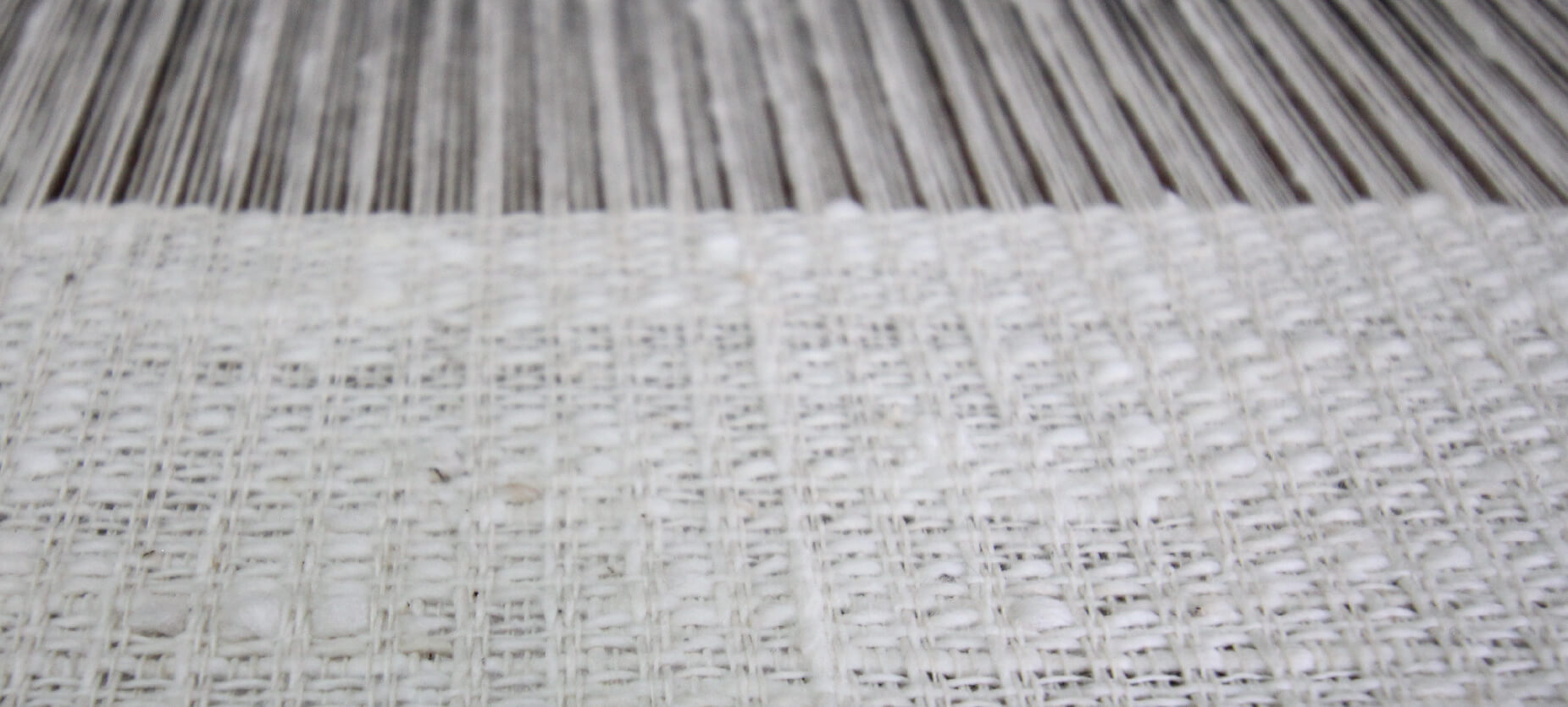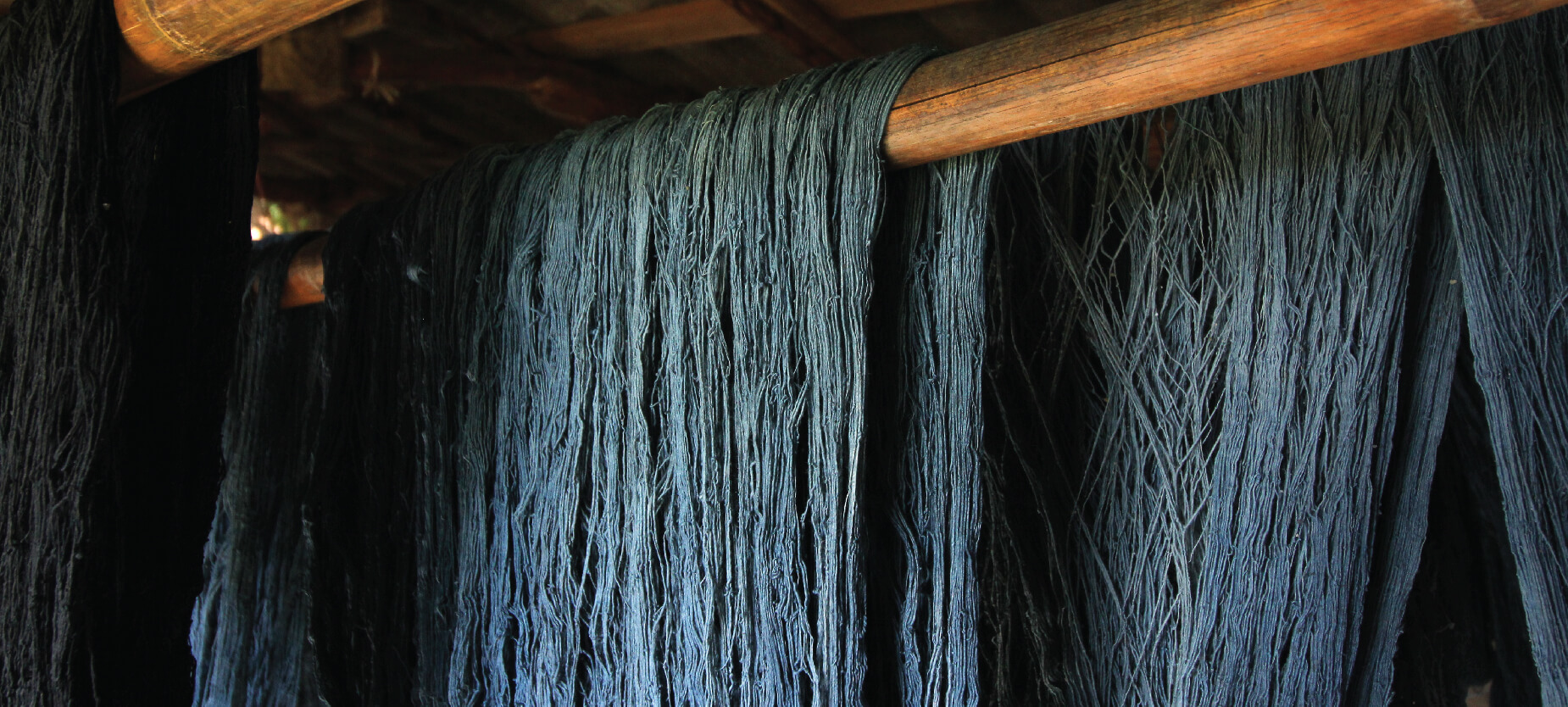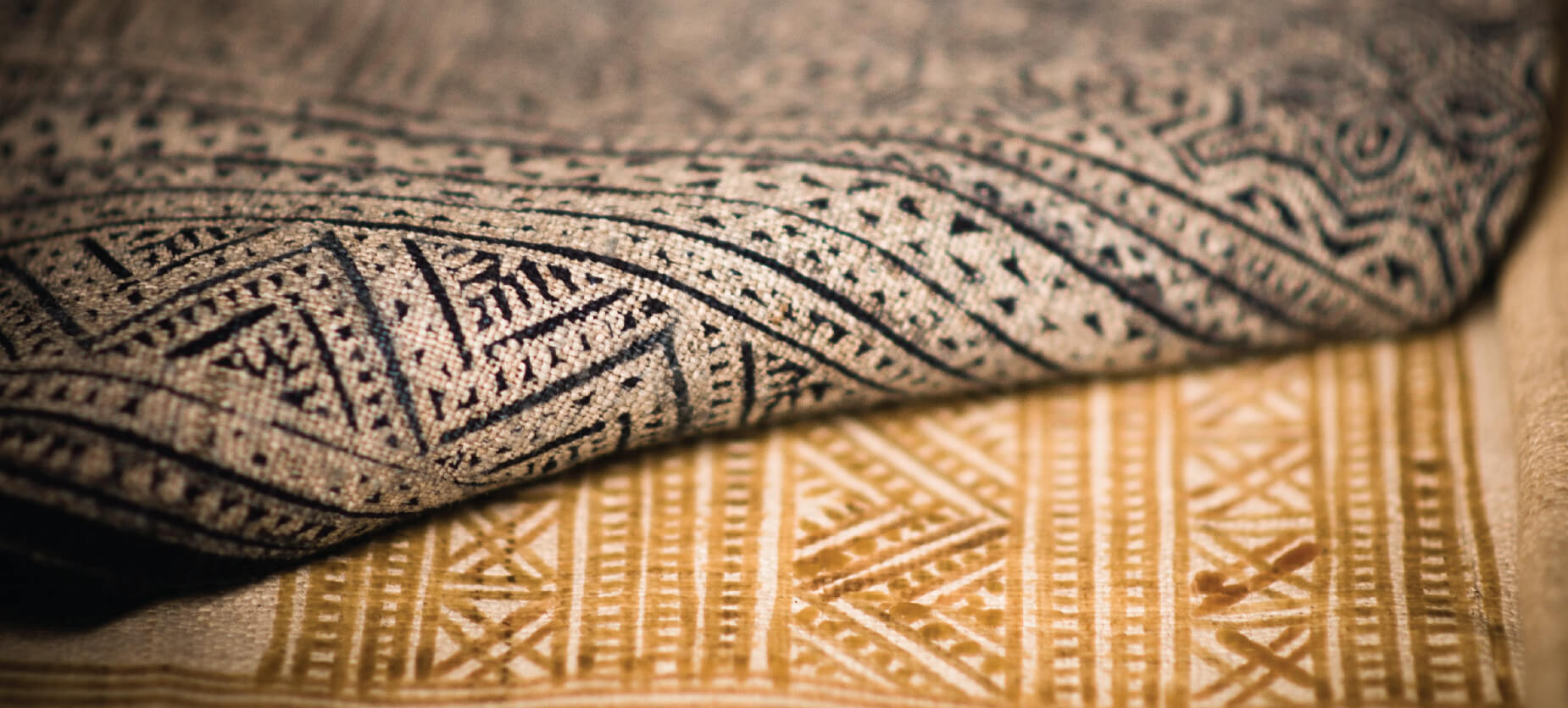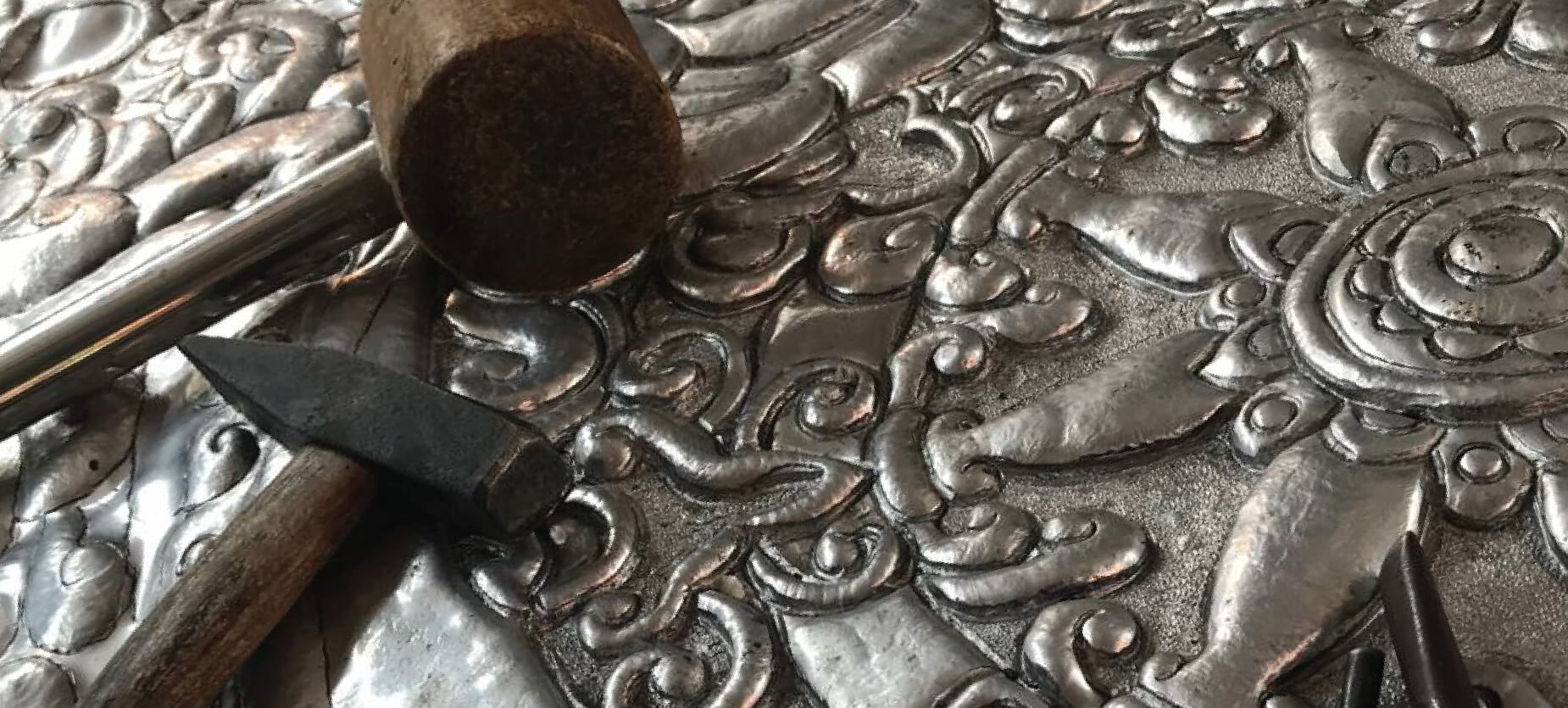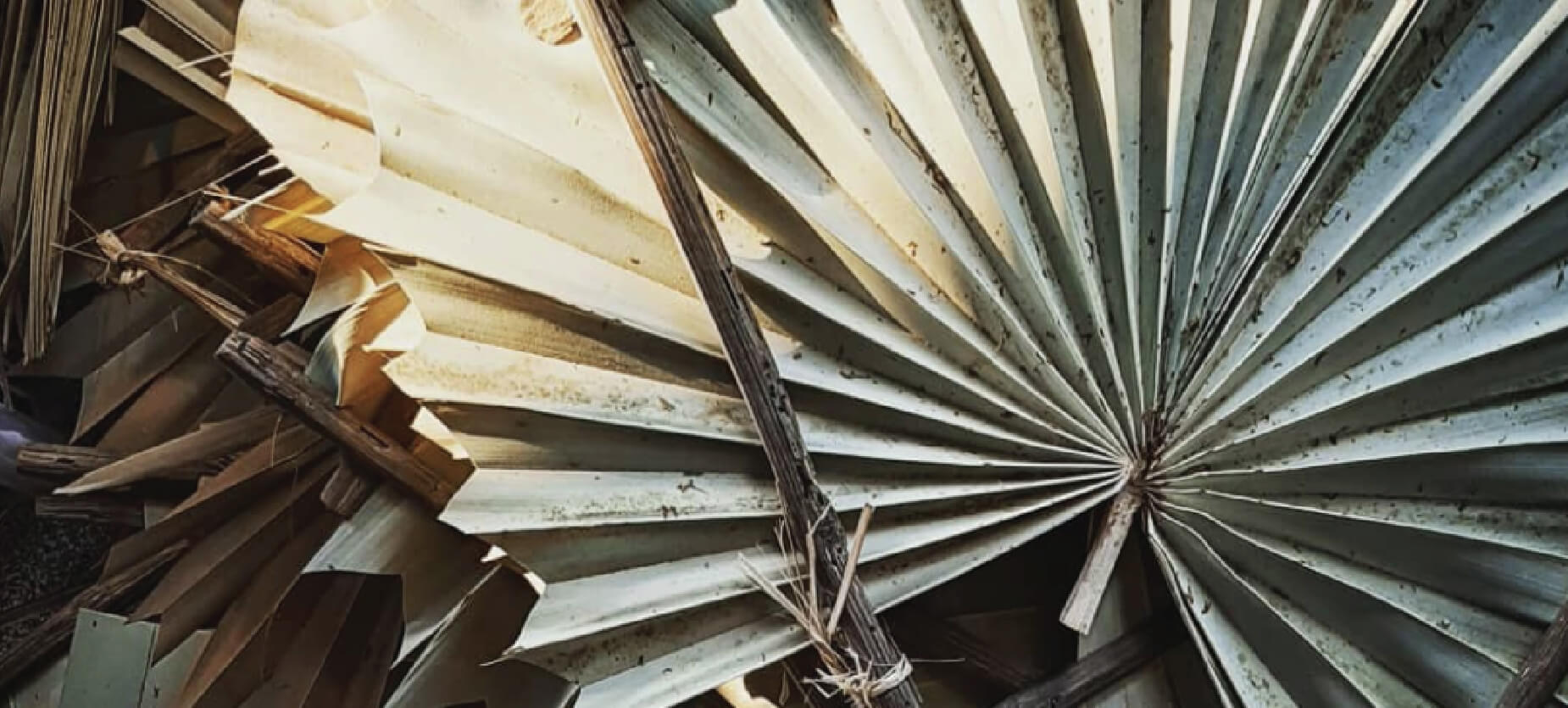We use cookies to personalize your experience. By continuing to visit this website you agree to our use of cookies. Learn more about privacy policy
WEAVE LIKE HMONG
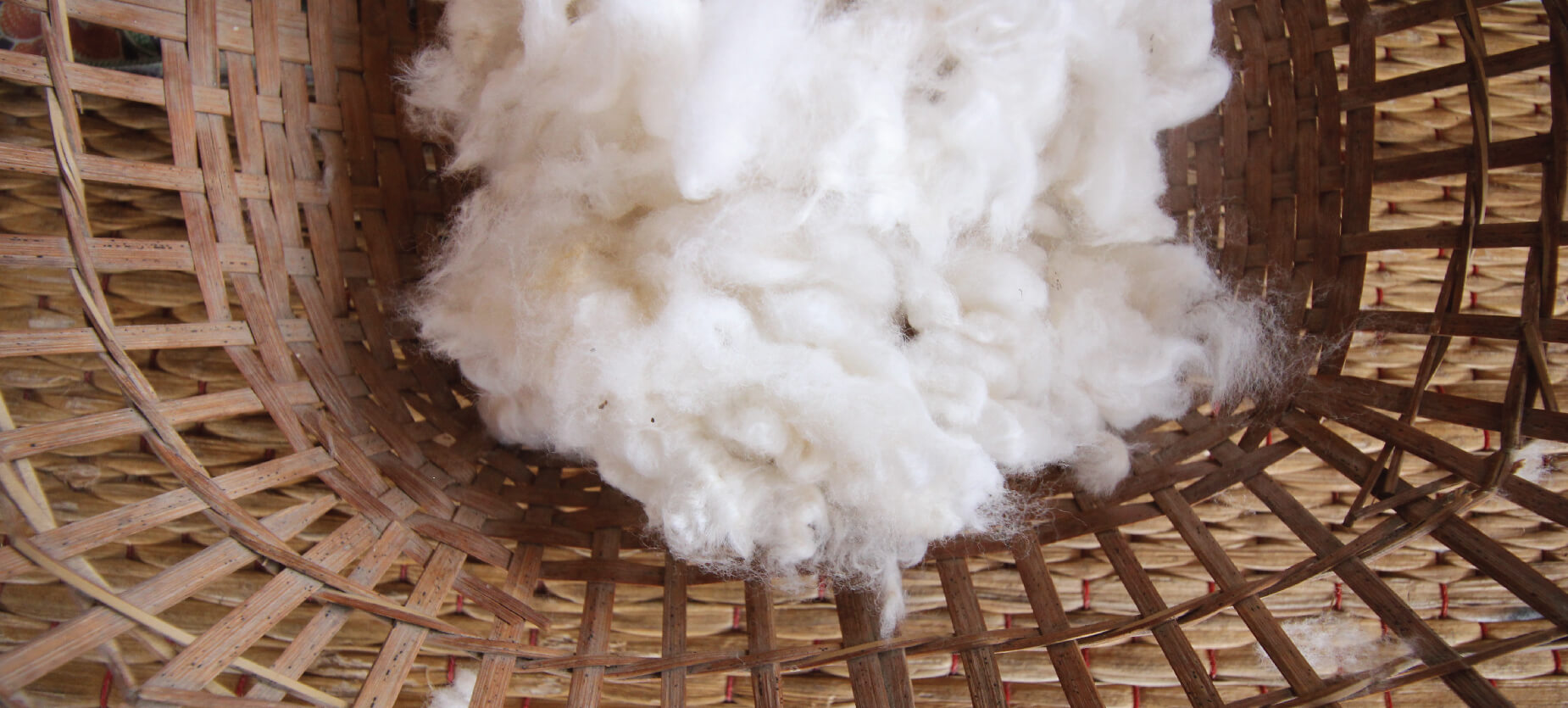
As every garment is confectioned by hand, requiring many months and steps to fabricate, Hmong women, men, and children own very few changes of clothes. One or two sets, relatively unadorned, are fashioned for the activities that consume their daily lives. In addition to these, Hmong women specially prepare sets of clothes for celebratory occasions, where every item has been sumptuously decorated with indigo batik motifs and/or ornamental needlework, and carefully stored until the day of the gathering.
Of all the garments that Hmong women wear, the hallmark of their attire is their voluminous, knee-length pleated skirts, which sway attractively with every step. With knowledge passed down through an unbroken chain of ancestors, every woman fashions such a garment, from seed, to thread, to cloth, by performing a myriad of steps and implements.
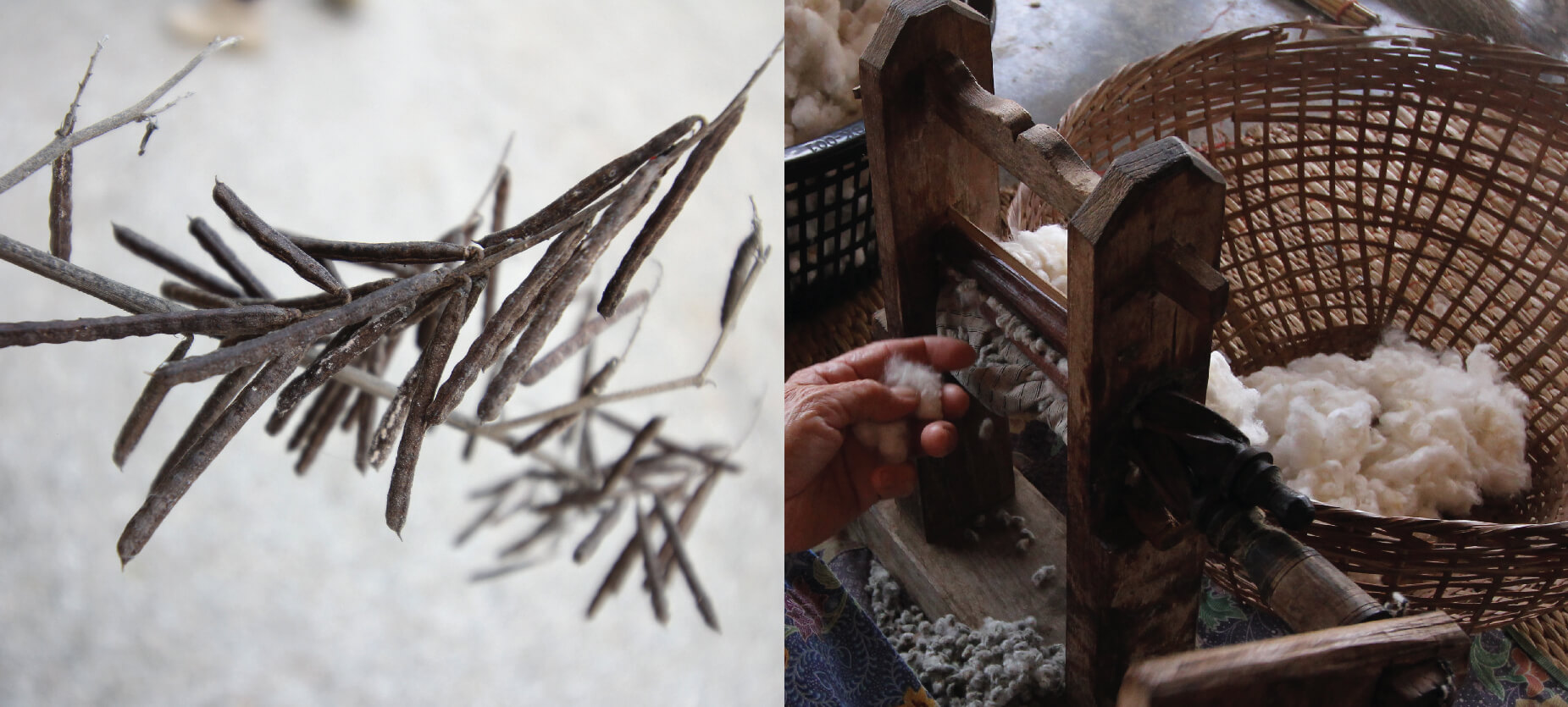
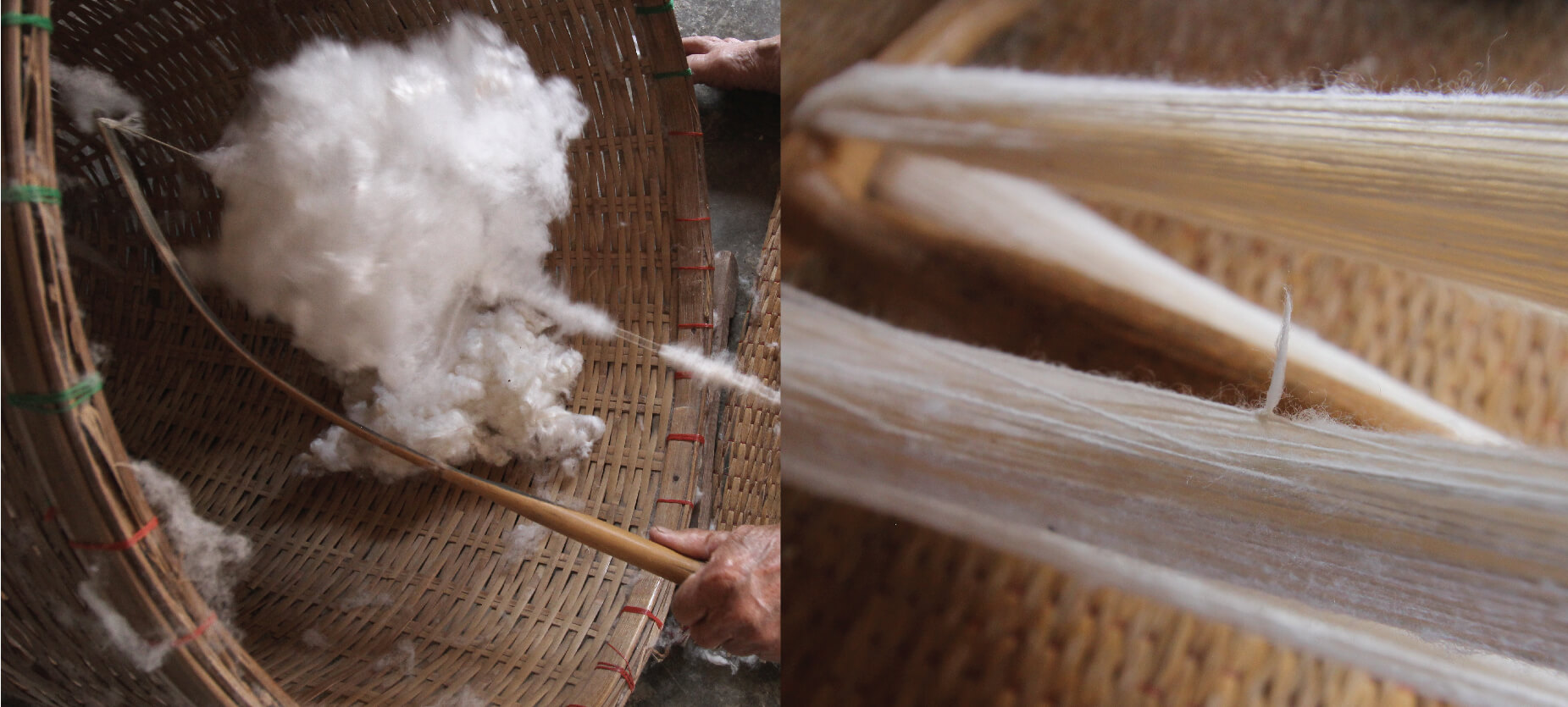
The initial phase begins with planting hemp and cotton seeds in the summer season and tending the crops until the harvest. Once reaped, the hemp bark is peeled, and the cotton is separated from its seeds and hulls by a wooden cotton gin. These raw hemp and cotton fibers then go through a number of phases—disentangling and cleaning them with a sharp-toothed “comb”; rolling them into a single continuous thread; winding the yarn into skeins on the wooden tool, stretching and separating the hemp on a swift—a revolving bamboo frame made with a vertical central pole and two horizontal cross poles; spinning the threads on a wheel powered by a foot pedal, boiling the threads and treating them with beeswax and wood ash, and finally pressing them with a massive stone roller, which “irons” the yarn, making it soft and smooth.
Once the skeins of hemp have been prepared, a Hmong weaver threads her loom, separating the warps on a “reed” of wood and bamboo. She controls the tension of the weft with a back strap while shifting the warps with a foot treadle. As she periodically brushes the threads to remove loose fibers and dust, she uses a wooden tool, unique to the Hmong, that ingeniously acts as both a shuttle and a beater, to weave the long narrow hemp panels, measuring eight to nine meters, that will be pleated into her skirt.
